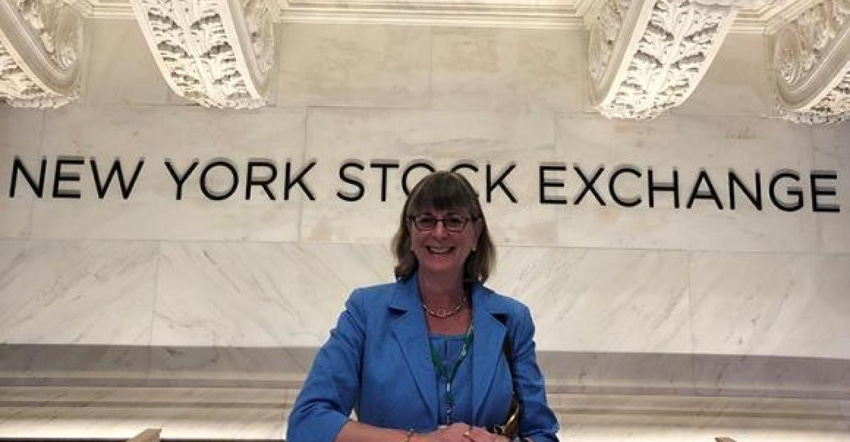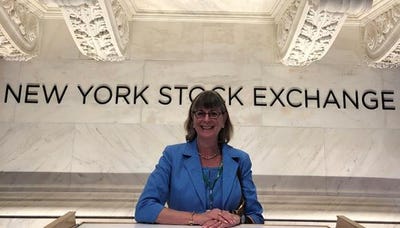
The publicly-traded solid waste companies reported their 2020 fourth quarter earnings and presented their 2021 outlooks over the past two weeks. In this month’s edition of Business Report, we briefly recap the fourth quarter highlights and pull together the themes (and differences) from the 2021 outlooks.
Fourth Quarter 2020 Snapshot
The solid waste companies generally reported fourth quarter EBITDA and free cash flow (FCF) above expectations, with the latter even more notable as almost all of them took advantage of the underlying FCF strength to prepay previously deferred payroll taxes under the CARES Act. Waste Management’s (WM) EBITDA was in line, despite a drag from incorporating the initial results of the recently closed Advanced Disposal Services (ADS) acquisition. Pricing was basically stable and in line with expectations. Across the board, volume was the driver behind the higher-than-expected earnings. Generally, volume declines were expected to be relatively in line with what was reported in the third quarter, but instead, although volumes remained negative, the rate of decline improved sequentially, despite the COVID-19 surge that occurred during the quarter. That, combined with continued cost control, largely enabled the companies to approach, or even exceed, their initial budgets for the year before the pandemic struck.
The 2021 Outlook — Pricing Stable, Volume Forecasts as Expected, but Reality Could Be Better
For 2021, pricing was generally forecast to be in line with recent trends. WM and Republic Services (RSG) forecast yield of 2.5%, while Waste Connections (WCN) and GFL Environmental (GFL) anticipate pricing in the range of 3.5%-4% and Casella Waste (CWST) in the range of 3.5%-4.5%. Although stable, the forecasts imply underlying strength, as the companies’ CPI-linked businesses (primarily residential) will be impacted negatively in 2021 by 2020’s low inflation rate. Improving residential and landfill pricing was a particular focus.
Volume growth projections were largely as we forecast last month, coalescing around 1%-2%, within a broader range of 0.5% at the low end to 2.5% at the high end. This varied depending on the company, but that was largely attributed to the macroeconomic uncertainties and lack of visibility as to when certain pieces of the business would recover, dependent on the path of the pandemic and the pace of vaccinations. Basically, all the companies saw potential upside to their volume forecasts in the event of a second half reopening, to various degrees. WCN and GFL, with volume forecasts of 1%-1.5% and 0.5%-1%, respectively, were most conservative, anticipating no real recovery or significant improvements from current volume levels. Although there’s no question that some lost business is permanently shuttered, the potential upside can be seen in the commentary with regard to how much commercial business that had been suspended had returned, which ranged from less than 60% for WCN to around 70% for WM and CWST.
And, several companies referenced the amount of solid waste business that had been lost due to the pandemic—GFL put it at up to $130 million, CWST at $40 million, and WCN at $100 million in the commercial line. Substantial swathes of the commercial base remain shuttered (i.e. schools, entertainment venues, office buildings), and that commercial business tends to carry higher margins. WM and GFL certainly saw their business as a “reopening play”, particularly given the restrictions still in place in parts of the Northeast and Canada.
Commodities Finally and Firmly a Tailwind
Recycled commodity and renewable energy (RIN) pricing were a benefit in the fourth quarter, and that is expected to continue into 2021, with greater certainty and less caveats than in the past, amid some anticipation of a pick-up in inflation more broadly. RINs pricing benefitted from the Biden election win, and while companies are forecasting somewhat lower levels than recent highs, it remains a meaningful benefit, with WCN and WM the primary beneficiaries. Recycled commodity pricing, driven by fiber, is expected to remain elevated, despite the 2021 Chinese ban on importing old corrugated cardboard (OCC), given the oft discussed work from home trend driving increased packaging and the fact that domestic mills that use recycled paper as feedstock are continuing to come on line.
That said, the rise in recycled commodity pricing is broader based, with aluminum and HDPE also showing strength, while the recent recovery in oil prices is expected to benefit the energy waste business. WCN’s management forecast that current commodity pricing, if sustained throughout 2021, would add around 60 basis points to EBITDA margins, though all the companies pointed to recycled commodity pricing as incremental to margins to some degree.
Overall Margin Guidance Generally Modest, But Lower Cost Structure Obscured
Although WM and RSG specifically referenced “learning to operate with a lower cost structure” and “a new level of performance”, respectively, forecast margin improvement was more modest overall, in the range of 10-50 basis points, with RSG at the low end at 10 basis points, and WCN and CWST at the higher end at 50 basis points. Company specific factors accounted for this, as underlying solid waste margins were forecast to be up anywhere from 50-90 basis points. GFL stood out, forecasting a stronger overall margin expansion of 90 basis points. WCN management is perhaps the most skeptical that the cost reductions that all the companies so successfully implemented swiftly in the early stages of the pandemic can be sustained.
2021 EBITDA and FCF Guidance Broadly in Line to Positive and Considered Conservative
WCN’s and GFL’s EBITDA and FCF guidance were broadly in line with expectations, but considered the most conservative by a number of analysts. WM’s and CWST’s EBITDA and RSG’s earnings guidance were in line, with the FCF forecast generally a positive surprise for all three. GFL took great pains to lay out how its base guidance could be exceeded on a number of fronts, with debt refinancing ($20-$30 million in expected interest savings), incremental M&A potential ($50-$70 million in EBITDA), and reopening upside being the primary drivers.
M&A — Another Robust Year Expected
With the exception of WM, where the focus will be on integrating ADS, all the companies described their M&A pipelines as robust and anticipated another year of above average acquisition activity. Despite the well telegraphed Santek Waste acquisition slipping into 2021, RSG spent over $600 million on acquisitions in 2020 and anticipates another $600 million in investment in 2021, well above more typical levels of $100-$200 million. CWST is in active dialogue with companies with around $100 million of total annualized revenue. Despite digesting the ADS divestiture and the WCA acquisition, GFL expects to be an aggressive acquirer of tuck-ins, as well as referencing another larger transaction that management hopes to close fairly shortly.
The New Administration and EPA Not Perceived as a Negative
As the Biden administration and its EPA are expected to be more active on the regulatory front, particularly with regard to climate change, management teams were asked about the potential ramifications. Fairly consistently, management teams believe that, in general, stricter regulations are more often than not a positive for the industry, particularly for the publicly-traded companies, who have greater financial wherewithal to make the investments necessary to comply.
Several companies also noted that stricter regulation could prove to be a further competitive advantage over the smaller haulers and perhaps serve as another consolidation driver. Solid waste company sustainability reports also show considerable scope for emission reductions, and the larger players are increasingly being recognized for their ESG “creds”. Obviously, recycling is also part of this positive dialogue. Both CWST and WM also pointed out the business opportunity of helping other companies develop and reach their sustainability goals, as both companies have specific service lines catering to this growing market.
About the Author(s)
You May Also Like




